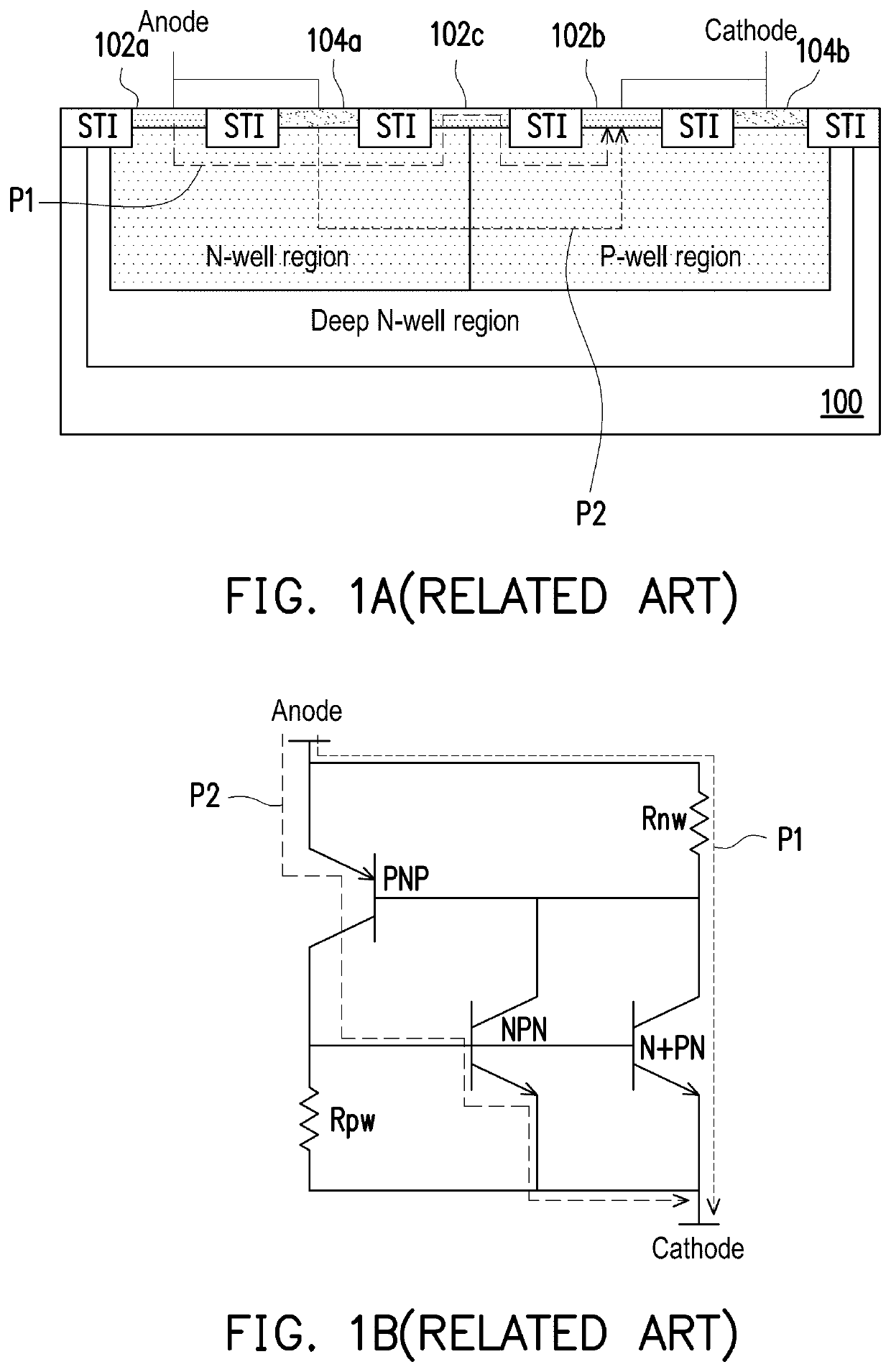Silicon-controlled rectifier
a rectifier and silicon technology, applied in the direction of semiconductor devices, electrical equipment, transistors, etc., can solve the problems of occupying a considerable chip area, affecting the reliability of integrated circuits, and severely restricting the reliability of semiconductor products
- Summary
- Abstract
- Description
- Claims
- Application Information
AI Technical Summary
Benefits of technology
Problems solved by technology
Method used
Image
Examples
first embodiment
[0030]FIG. 2A is a cross-sectional diagram of a silicon-controller rectifier (SCR) according to the disclosure.
[0031]With reference to FIG. 2A, the SCR of the first embodiment is an enhanced diode-triggered silicon-controlled rectifier (EDTSCR), including: a substrate 200 of a first conductivity type; a deep well region 202 of a second conductivity type; a well region 204 of the first conductivity type; a well region 203 of the second conductivity type; a first heavily doped active region 208a of the first conductivity type; a second heavily doped active region 208b of the first conductivity type; a third heavily doped active region 208c of the first conductivity type; a first heavily doped active region 206a of the second conductivity type; a second heavily doped active region 206b of the second conductivity type; a third heavily doped active region 206c of the second conductivity type; a first shallow trench isolation structure 210a; a second shallow trench isolation structure 210...
second embodiment
[0039]For the reverse diode D2, RC gate coupling effect by a gate capacitor and an N-well resistor helps to trigger the device. The gate capacitor is composed of the second gate 302, and the resistor is composed of the cross-over N+ region resistor and the N-well (the well region 203 of the second conductivity type) resistor. A gate voltage generated further enhances such effect, thereby improving the current discharge capacity of the forward (gate-controlled) diode D1 and the reverse (gate-controlled) diode D2. As a result, the SCR of the second embodiment can achieve a lower trigger and a faster response time under ESD pressure without using other trigger devices. Once the reverse diode D2 is turned on, the surface gate-controlled diode circuit (discharge path P1) starts to discharge the ESD current, and the parasitic transistor NPN will also be turned on. After the parasitic transistor NPN and the parasitic transistor PNP are turned on successively, finally the SCR path (the disc...
PUM
| Property | Measurement | Unit |
|---|---|---|
| width | aaaaa | aaaaa |
| width | aaaaa | aaaaa |
| voltage | aaaaa | aaaaa |
Abstract
Description
Claims
Application Information
 Login to View More
Login to View More - R&D
- Intellectual Property
- Life Sciences
- Materials
- Tech Scout
- Unparalleled Data Quality
- Higher Quality Content
- 60% Fewer Hallucinations
Browse by: Latest US Patents, China's latest patents, Technical Efficacy Thesaurus, Application Domain, Technology Topic, Popular Technical Reports.
© 2025 PatSnap. All rights reserved.Legal|Privacy policy|Modern Slavery Act Transparency Statement|Sitemap|About US| Contact US: help@patsnap.com



